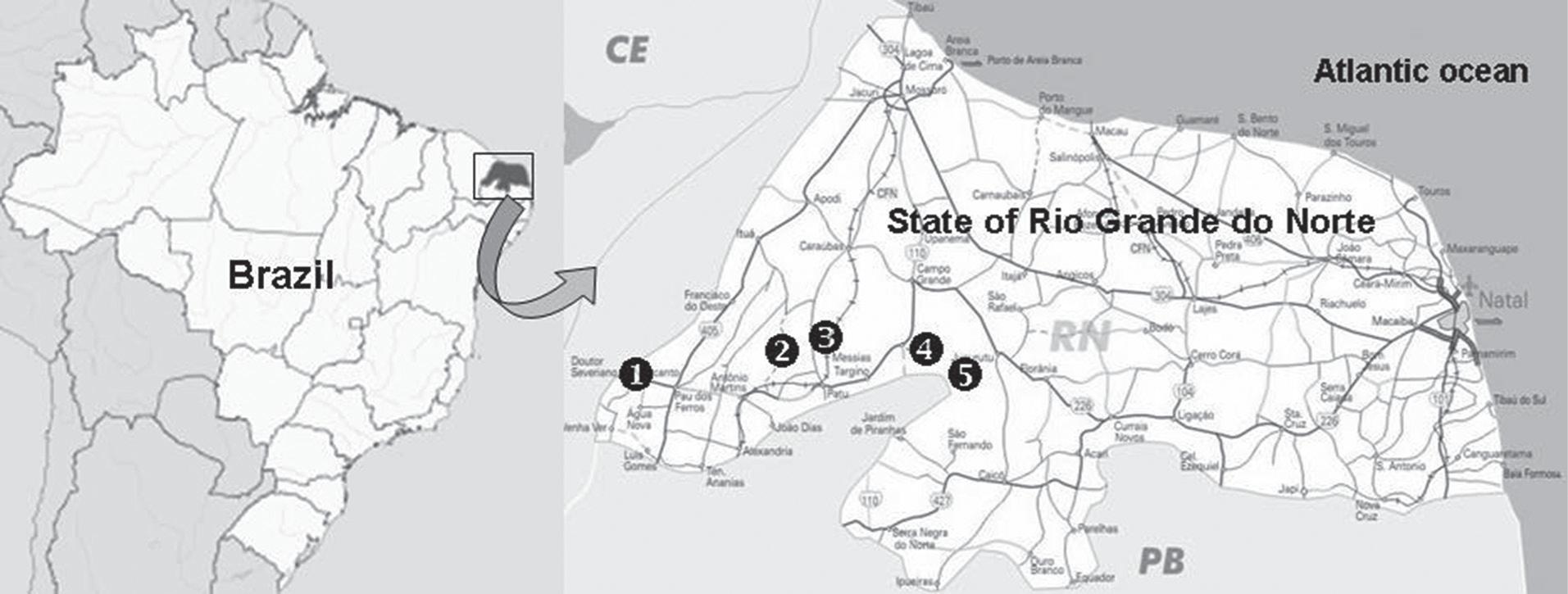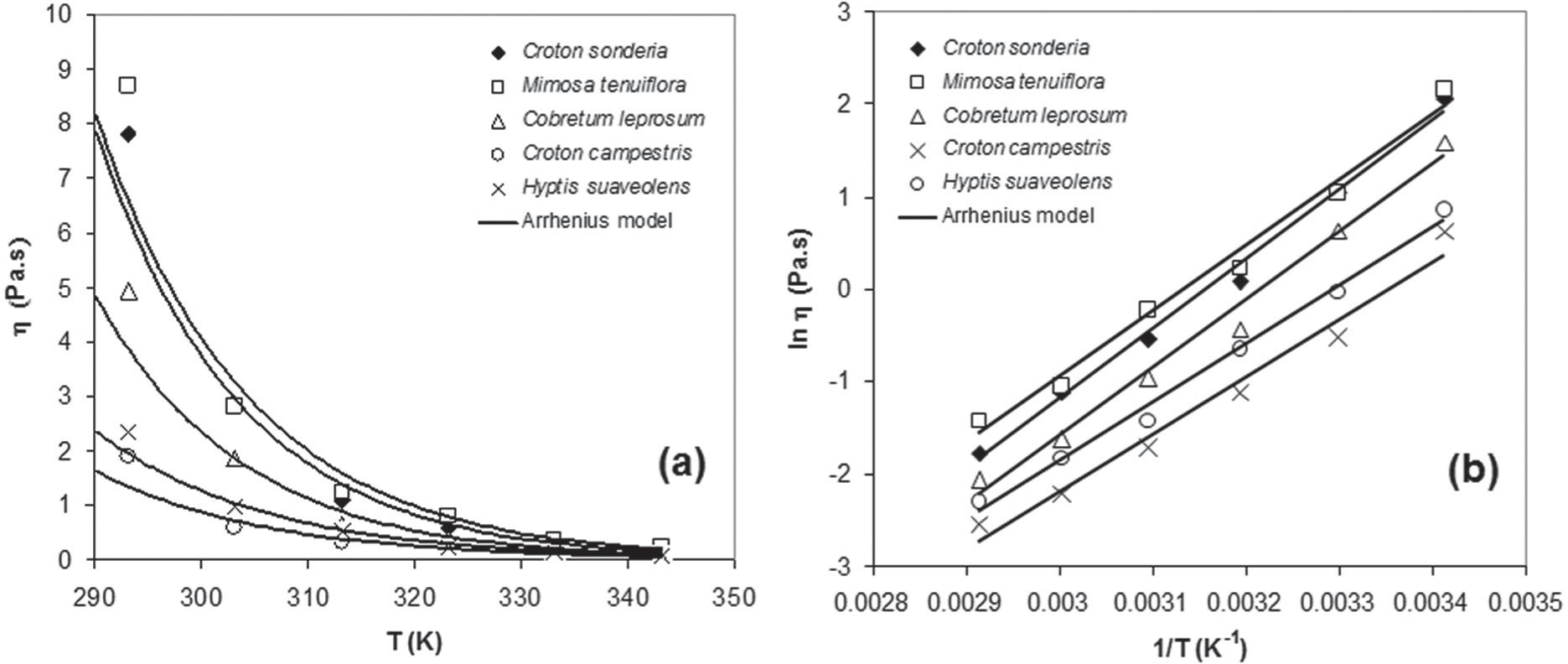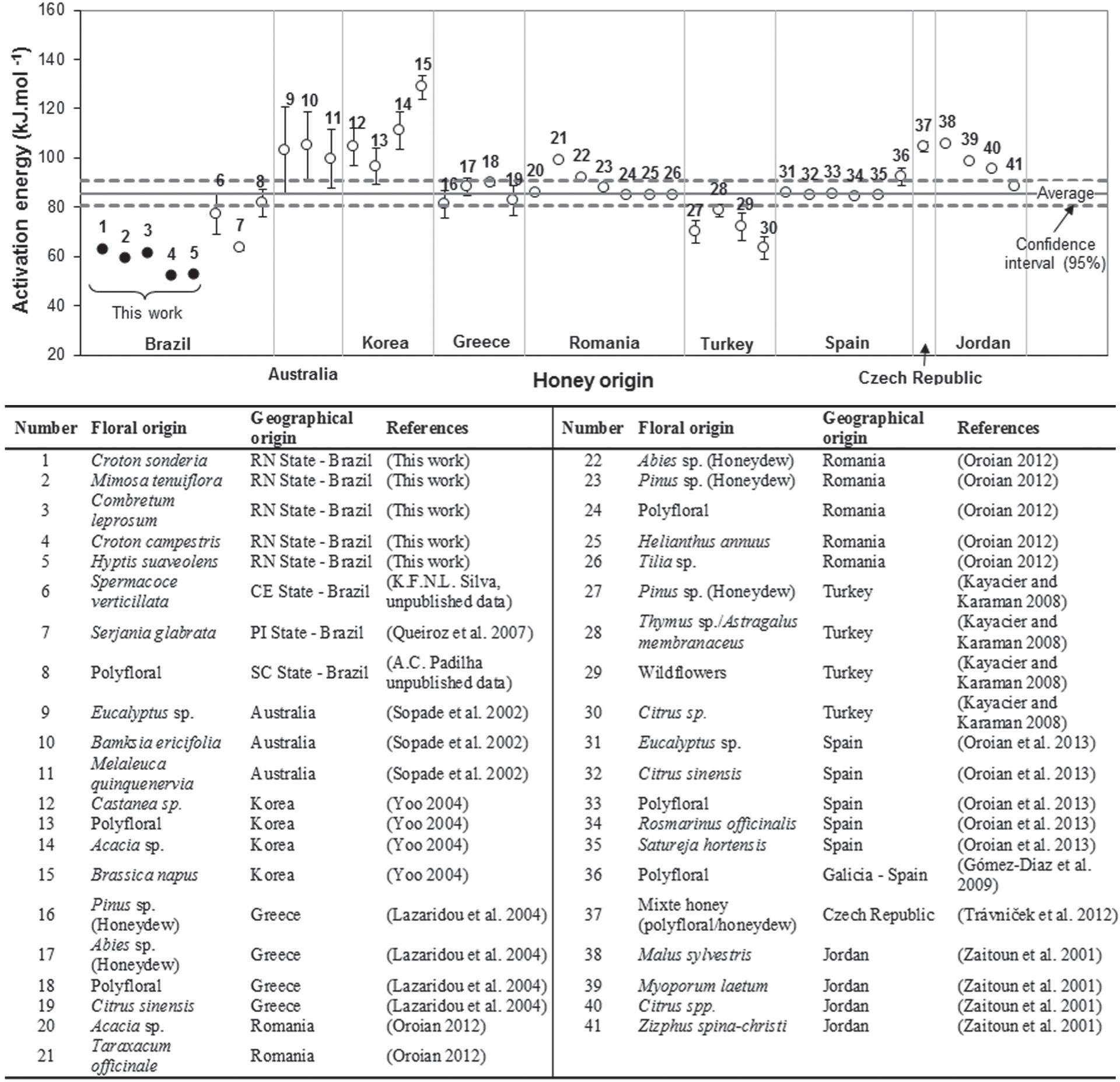The aim of this paper was to investigate the physicochemical characteristics and rheological behavior of some floral honeys from species of wild plants found in the Caatinga biome, as well as, correlate honey viscosities with its chemical composition. Thus, five honeys with floral predominance of typical plants foraged by honeybees in Caatinga were analyzed. Results showed that moisture content of honeys ranged from 17.45 to 21.50 g/100g. The samples exhibited higher fructose content (37.58 - 43.95 g/100g) and lower glucose content (27.41- 33.80 g/100g). The glucose-water ratio ranged from 1.55 to 1.80. Sucrose contents, excluding Croton campestris honey sample, exhibited values above the highest sucrose content (6.0 g/100g) allowed by Brazilian norm. The ash content ranged from 0.02 to 0.19 %. The insoluble solids content were above 0.1 g/100 g. The electrical conductivity ranged between 144.90 and 412.55 µS.cm–1. All the honey samples behaved as Newtonian fluids. The viscosity values, measured at 293 K, varied from 1.90 to 8.55 Pa.s. An empirical mathematical model adapted from the Arrhenius model provides a good description of honey viscosity as a function of combined effects of temperature and moisture content.
Arrhenius model; glucose; moisture; rheology; viscosity












